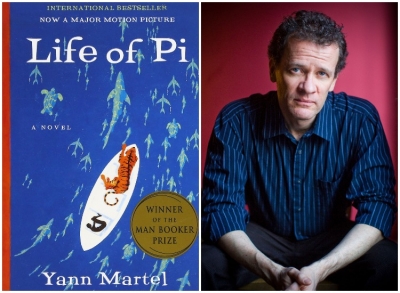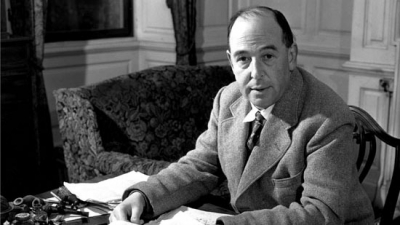What is the purpose of Yann Martel in writing the story of ‘Life of Pi’?

“One of the reasons I started writing Life of Pi is, I was struck how in the 2000s there could still be gods around. After all the triumphs of science and technology, how could people still believe in gods... Hence, I wrote Life of Pi, to try to understand that phenomenon called faith, where you believe despite having no proof. So Life of Pi was just defending the act of love that is the more positive manifestation of religion.” ….. Yann Martel..
Canadian author Yann Martel's Life of Pi is a fantasy adventure novel that explores how faith can help one cope with tragedy. Lolita Chakrabarti's stage adaptation of this Booker Prize-winning novel is said to open on Broadway next year. Let's revisit this story and see what makes it a modern classic.
About the Author
Yann Martel was born in Salamanca, Spain on June 25, 1963, to Canadian parents. Growing up, his family moved a lot and lived in various countries such as Spain, Costa Rica, France, Mexico, and the U.S. Martel completed his secondary education in Canada at Trinity College School in Port Hope, Ontario, and went on to study at Trent University and Concordia. University, earning a Bachelor’s degree in Philosophy.
Although he has written and published many books, including The Facts Behind the Helsinki Roccamatios and Other Stories (1993) and Self (1996), he is best known for his Booker Prize-winning novel Life of Pi. It was directed and produced by Ang Lee for the big screen in 2012 and won four academy awards. Best Director and Best Visual Effects in 2013.
It was recently revealed that a stage version of Martel's fantasy adventure novel is under way to grace the Broadway stage next year, beginning preview performances in March 2023, at the Gerald Schoenfeld Theatre ahead of opening night on March 30, 2023.
Life of Pi
Life of Pi is a curious mix of zoology and theology that explores the matters of the soul. The author says that the idea for the novel dawned on him while he was backpacking in India in 1997.
Life of Pi is the story of a multi-religious Indian teenager called Piscine Molitor Patel (which he shortens to Pi Patel), who was born and raised in Pondicherry, in a family that owns and operates a zoo. This novel narrates Pi's recollection of the 227 days he was shipwrecked with a Bengal tiger named Richard Parker in the Pacific Ocean.
What makes it a modern classic?
The meaning of Pi
Pi's name serves a dual-purpose in the book. For our protagonist it is a symbol of home - a safe haven that shields one from the unchartered territory that is the outside world. But at the same time, the mathematical value of Pi is an irrational number, which no one can completely decipher. It also stands in as a metaphor for life in general which is a blend of the rational (such as science and reason) and the (such as our faiths and beliefs).
"In that illusive irrational number with which scientists try to understand the truth of the universe, I found refuge." - Pi says in the book about the mathematical symbol.
A novel of questions
This book is full of spiritual references, poetic visual imagery, and questions no one seems to have definite answers for even though they are an inseparable part of the human experience. Questions about faith and the relativity of truth are at the core of Pi's story.
Even though Life of Pi starts off as a story that "will make you believe in God", it challenges the idea of blind faith. It is a testament to the fact that faith that is rooted in love is never threatened by doubt sprouted by seemingly insurmountable challenges one faces while riding the wave of life. Pi's journey endorses that religion is a personalised spiritual extension of oneself that is flexible,ever-evolving, and seasoned with one's experiences in the world.
This is further clarified by this statement Pi makes in the book "Doubt is useful, it keeps faith a living thing. After all, you cannot know the strength of your faith until it is tested."
The power of storytelling
The value of compelling storytelling is engrained in Pi's story from the very beginning of the novel with the author's note that makes it seem as if we are about to read an actual interview documented by the writer, blurring the line between fact and fiction.
Pi is an excellent storyteller who defines fiction as "selective transformation of reality" that allows one to bring forth the essence of an experience to communicate a deeper meaning. He uses story telling as a means of survival while presenting his account of the sea voyage to the Japanese officials who visit him in the hospital. They expect to hear the factual account of how the ship sank but are presented a fantastical tale with animals. When the novel's end discloses a transcript from the same interrogation revealing an alternate version of Pi's account where the animals are replaced by other human survivors, it reiterates how our protagonist is using storytelling as a means to make sense of and deal with the trauma of the horrible things he witnessed and partook in to survive on that lifeboat.
Picture Credit :Google
